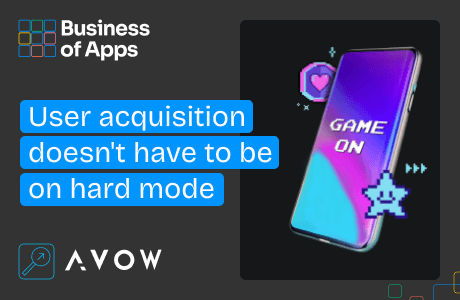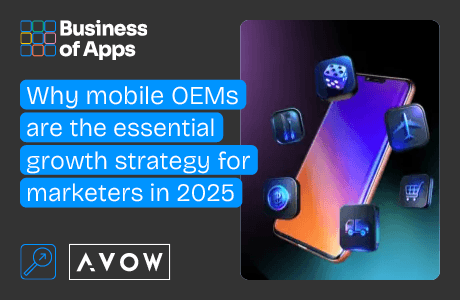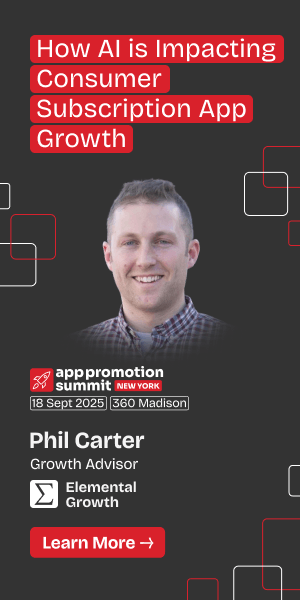After many years in mobile advertising, from media buying to demand side platforms (DSPs) and now leading a company focused on mobile OEM advertising, I have seen user acquisition (UA) move from something relatively simple to something much harder to get right.
Mobile gaming is not slowing down, but growth strategies are hitting limits. In 2024, games saw 46.3 billion downloads, 5 trillion ad impressions, and 390 billion hours of play. With over 300K advertisers expected in 2025, CPIs are rising, targeting is shrinking, and UA channels are under pressure.
The old UA playbook is no longer enough. So what does a smarter path forward look like?
High intent users are still out there, the challenge is finding them
Most gaming app developers and marketers are not struggling to get impressions. The real challenge is reaching players who stay, engage, and spend.
In Tier 1 markets, costs are high and everyone is chasing the same users. SEA and LATAM offer scale, but reaching players there takes more than budget. It requires better targeting, local creative, and channels beyond Google and Meta. Even then, many campaigns struggle to break through.
Mobile OEMs like Xiaomi, OPPO, Vivo, Huawei, and Samsung offer a powerful alternative, giving access to high intent Android users across channels that cover 86 percent of the global Android market.
Why are solid campaigns failing to scale?
Often the problem isn’t budget, but fatigue from using the same overcrowded channels. Even well resourced teams are hitting walls. What used to work no longer delivers. ROAS targets stay high, traffic costs more, creatives blend together, and attribution keeps getting tougher. If the basics are breaking down, what still works?
To tap into a new user base outside the mainstream, mobile OEMs are the only viable alternative. They provide differentiated placements and access to users overlooked by major platforms, helping gaming marketers and developers scale efficiently.
Creative still matters. But context matters more
Most marketers agree that creative drives installs. The question is which formats deliver real quality, and how to keep production sustainable.
The best performing teams mix formats like playables, videos, and banners based on user behavior. They test faster, focus on engagement, and pick placements where the creative fits. But even great creative will fail if it shows up in the wrong place.
That is why more teams are turning to formats that feel like discovery, not disruption. And once your message lands, how do you know it actually worked?
Creative formats that feel native and non-intrusive help brands engage users where they’re most receptive.
Attribution is messier. Smarter channels can help
Apple’s privacy changes and Android’s updates have made ROI harder to track. Teams are stuck stitching together incomplete data across platforms.
Some are turning to channels that offer direct, event based reporting. Mobile OEMs, for example, give clean, closed loop insights without user level tracking. Better measurement also opens the door to better monetization.
Monetization only works if the experience holds up
For games using both in app purchases (IAPs) and ads, balance is key. Too many interstitials and players leave. Too few and revenue suffers.
What works are ad formats that feel like part of the product. That includes rewarded video and native placements that introduce the game without interrupting the flow.
How your game is discovered also matters. That first impression shapes what players expect once they start playing.
Alternative app stores offer premium performance without premium pricing, helping games drive monetization while preserving player experience.
Retention starts earlier than most teams think
Retention does not begin on Day 1. It starts the moment a player first sees your app.
Teams that act early to prevent churn or re-engage players often see stronger LTV. Discovery plays a big role here. Trusted surfaces like curated stores or device notifications often beat even the best ad creative.
Mobile app developers can reclaim freedom of choice with alternative app stores, giving them more control over where and how their games are found.
The next phase of UA will reward smart diversification
No single channel will solve UA in 2025 or 2026. Growth will come to teams that experiment early, step outside the Google Apple Meta bubble, and align creative with smarter data.
One option finally getting the attention it deserves is mobile OEM advertising, something we have been pioneering at AVOW. With dynamic preloads, featured placements, and system level notifications, it offers real visibility at the device level, not just another fleeting impression.
That is why we created Ready Player Win: The Mobile OEM Advertising Playbook for Gaming Apps, a practical guide built from hands-on work with gaming studios, OEMs, and measurement partners.
By default, mobile OEMs need to be considered as part of every gaming app’s marketing mix.
You can read the gaming playbook here.











